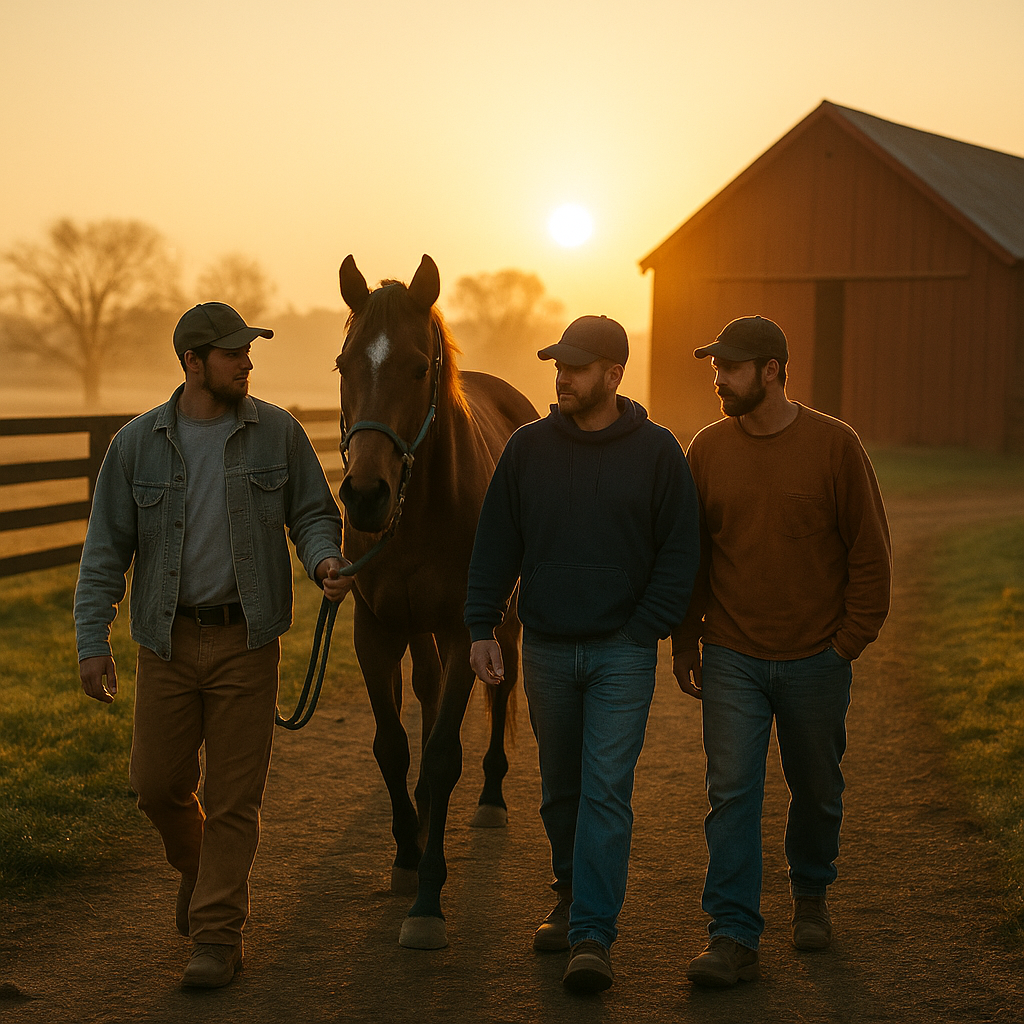Your cart is currently empty!

From Paddocks to Purpose: How Stable Recovery Equips Men in Sobriety
Rehab often focuses on detox and counseling—but what happens after the clinical walls come down? Too many people leave programs with nowhere to go, facing relapse rates of 40–60%. Like at The Healing Ranch of WNY, community-based farms are stepping in to fill that gap.
Enter Stable Recovery, a year-long, peer-driven living and working community on Taylor Made Farm in Nicholasville, Kentucky, where caring for 1,000-lb thoroughbreds builds routines, responsibility, and real job skills.
Table of Contents
- The Challenge of Relapse
- Introducing Stable Recovery
- The Science Behind Equine Therapy
- A Day at Taylor Made Farm
- Success Stories & Outcomes
- Lessons for Other Programs
- Conclusion
- What’s Next?
The Challenge of Relapse
Traditional programs often end with little structure beyond the discharge date. Studies show up to 60% of participants relapse within a year†. Without stable housing, meaningful routine, or support networks, many fall back into old environments—the very triggers that fueled their addictions.
† NIDA, “Principles of Drug Addiction Treatment” (nida.nih.gov)
Introducing Stable Recovery
Founded six years ago by Frank Taylor on his family’s 1,100-acre thoroughbred farm, Stable Recovery offers:
- Residential living in peer-run homes
- Year-long horsemanship training
- Housing, food, clothing, and transportation
- Wages for farm work
Participants join only after 30 days sober, committing to chores, AA meetings, and horse care under a structured schedule. (apnews.com)
Learn more at stablerecovery.net (stablerecovery.net)
The Science Behind Equine Therapy
Working with horses taps into proven therapeutic mechanisms:
- Emotional regulation: Responding to a 1,000-lb animal builds trust and patience. (washingtonpost.com)
- Routine and responsibility: Daily barn chores create a sense of purpose.
- Physical engagement: Farm labor improves fitness and sleep—both critical for mental health.
Research shows animal-assisted therapy can reduce anxiety, improve mood, and strengthen social skills when integrated into recovery programs.
A Day at Taylor Made Farm
Participants rise at dawn for:
- Morning chores (feeding, stall cleaning)
- AA meetings or group check-ins
- Horsemanship classes (tacking, grooming, riding)
- Farm maintenance (fencing, hay bales, pasture work)
- Evening reflections around the barn
This blend of peer accountability, skilled training, and physical labor replaces old routines with new, life-affirming rhythms. (apnews.com)
Success Stories & Outcomes
- 70% success rate after 90 days in maintaining sobriety and earning equine-industry jobs. (washingtonpost.com)
- 110+ graduates, many placed in racing stables, vet clinics, or farm management roles.
- Renewed family relationships as residents prove reliability and rebuild trust.
Lessons for Other Programs
- Peer-driven model: Graduates mentor new arrivals, reinforcing recovery culture.
- Holistic support: Addressing housing, work, and emotional needs in one program.
- Industry partnerships: Ties with the racing community ensure job pipelines.
These elements can guide local initiatives—like The Healing Ranch of WNY—to adapt farming-based recovery models.
Conclusion
By blending equine care, peer accountability, and structured work, Stable Recovery offers more than sobriety—it builds purpose, skills, and a supportive community. As traditional rehabs struggle with post-program relapse, programs on farms like Taylor Made—and at The Healing Ranch—are rewriting the playbook for lasting recovery.
What’s Next?
- Explore other care-farm models: Stay tuned for our upcoming post on Blanchet Farm in Oregon, offering donor-funded, no-cost farming recovery.
- Get involved locally: Volunteer, donate, or advocate for care-farm programs in your area.
- Join the conversation: Share your thoughts or experiences with farming-based therapy in the comments below.

Leave a Reply